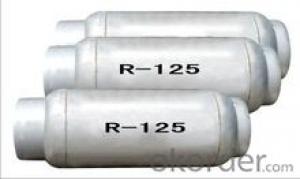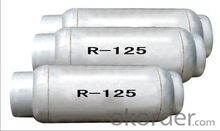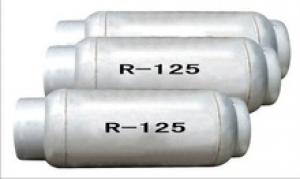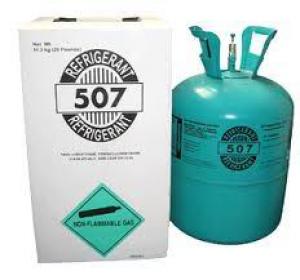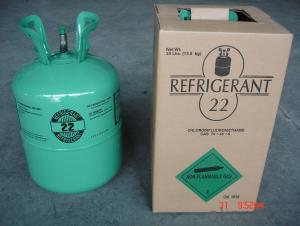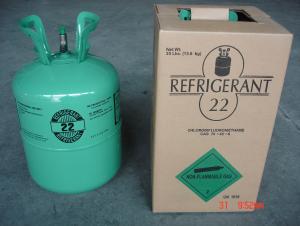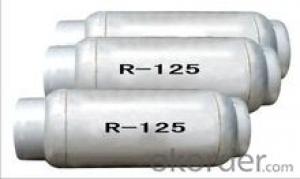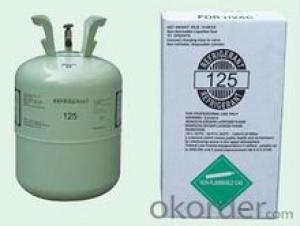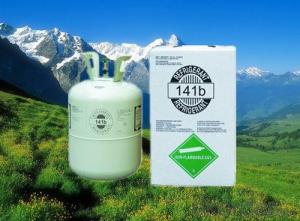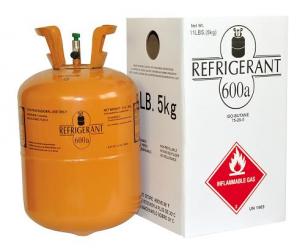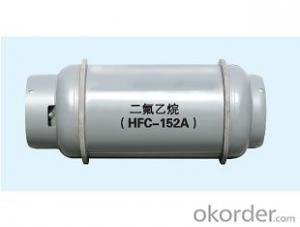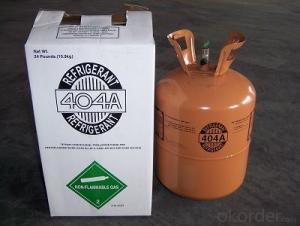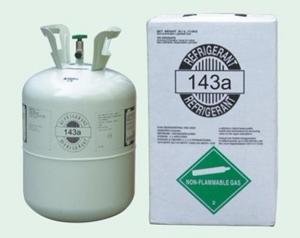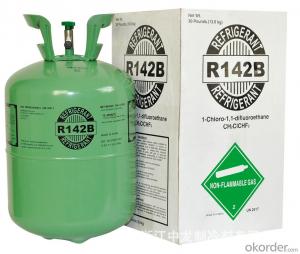Fire Extinguishing Agent R125a
- Loading Port:
- Shanghai
- Payment Terms:
- TT OR LC
- Min Order Qty:
- -
- Supply Capability:
- 1000MT m.t./month
OKorder Service Pledge
OKorder Financial Service
You Might Also Like
Specifications
1.OEM is accepted
2.Delivery time:15 days
3.Good service after sale
4.competitive price in this line
Refrigerant R125a, it is an important component of mixed working substance, and can replace R502 and R22. Used as fire-extinguishing agent, can replace Halon1211 and Halon1301.
Property of chloride
Formula: CHF2CF3
Molecular weight: 120.0
B.P.,°C: -48.3
Critical temperature,°C: 66.05
Critical pressure, MPa: 3.59
Critical density, g/cm3: 0.571
Liquid density, 25°C,g/cm3: 1.19
Vaporization heat at B.P., KJ/Kg: 165
ODP(CFC-11=1): 0
QWP(CO2=1): 3500
Quality standard
Appearance: Colorless, no turbid
Odor: Odorless
Purity, ≥%: 99.8
Water, ≤%: 0.001
Acidity, ≤%: 0.0001
Residue on evaporation, ≤%: 0.001
Packaging & Delivery
| Packaging Detail: | 800kg, 1000kg, ISO tank. |
| Delivery Detail: | 15days |
- Q: What are the gaseous states of the oxygen-containing derivatives of the hydrocarbons under the standard conditions?
- Hydrocarbon derivatives of oxygen in the standard conditions are gaseous formaldehyde.
- Q: Is carbon monoxide an organic gas?
- Carbon dioxide is highly toxic. It is a strong ability to combine blood hemoglobin, which leads to cell hypoxia and suffocation. At present, if the trace carbon monoxide environment work, do not wear a gas mask and other necessary, it is recommended to eat more iron and calcium foods to reduce the harm to the body.
- Q: What is the hydrocarbon thing
- Hydrocarbons can be divided into: open chain hydrocarbons (carbon atoms in hydrocarbon molecules in open chain) - saturated hydrocarbons - alkanes - unsaturated hydrocarbons - olefins and polyolefins (carbon - carbon double bonds, unstable) - alkynes and (Cyclopentane) - cycloalkene - cycloalkyne aromatic hydrocarbon - monocyclic aromatic hydrocarbon (benzene and its homologues) - fused ring aromatic hydrocarbons (Polycyclic aromatic hydrocarbons and their homologues) - polycyclic aromatic hydrocarbons (naphthalene, anthracene and other condensed ring aromatic hydrocarbons and their homologues) all hydrocarbons are hydrophobic, that all the hydrocarbons are not soluble in water and coal The main ingredients are hydrocarbons
- Q: High school chemical hydrocarbons with hydrocarbon derivatives with water solubility, density for accurate and comprehensive summary, thank you. Out of college entrance examination
- Hydrocarbons, halogenated hydrocarbons, esters are difficult to dissolve in water. Hydrocarbons, esters are denser than water, and the density of halogenated hydrocarbons is generally greater than that of water. Hydrocarbon derivatives containing hydroxyl, amino or aldehyde groups such as alcohols, phenols, aldehydes, carboxylic acids, sulfonic acids and amines are soluble in water, And the shorter the solubility of the carbon chain, the greater the solubility of the carbon chain increases, until the same number of carbon atoms and similar hydrocarbons.
- Q: Such as the problem, and how, how to squeeze methane into liquid, or how to squeeze into the liquid gas? It is still very difficult ... there is a dangerous thing .... (this is not important) high reward
- Pentane, g, x, n, decane, to eleven to hexadecane are liquid hydrocarbons. Ethanol is not a hydrocarbon, it is aerobic. Polymeric material is a compound of relatively high molecular weight Composition of the material, there are many, such as rubber, plastic, fiber, paint
- Q: What is "organic" and "inorganic" in chemistry?
- Carbon compounds, not carbon oxides, carbonates, bicarbonates are organic matter
- Q: The aromatic hydrocarbon derivative refers to monocyclic or polycyclic
- To see what is the derivative of aromatic hydrocarbons, by its own is a single ring or multi-ring decision
- Q: Is the heterocyclic compound not a derivative of cyclic hydrocarbons? why?
- The heterocyclic compound is an organic compound containing a heterocyclic structure in its molecule. The atoms that make up the ring contain at least one heteroatom in addition to carbon atoms. The heteroatoms include oxygen, sulfur, nitrogen and the like. Theoretically, the heterocyclic compound can be regarded as a derivative of benzene, that is, one or more CH in the benzene ring is replaced by a heteroatom. The heterocyclic compound may be in parallel with the benzene ring to form a fused ring heterocyclic compound.
- Q: Is the number of hydrogen atoms in the hydrocarbon or hydrocarbon derivative molecule be even
- The number of hydrogen atoms in the hydrocarbons containing carbon, oxygen and oxygen is also even.
- Q: Why can organic matter be unique in chemical substances? What is the nature of the C atom?
- Carbon, and can be spun, sp2, sp3 hybrid, so CH, CC, CO, CN, C = C, C = O, C = N and other covalent bonds can be formed and the key size is moderate, So these keys can also be more easily broken and generate new compounds. For silicon, the type of hybrid is mainly sp3 (no O = Si = O this molecule exists), but the Si-O bond bond energy is greater than Si-C, Si-Si, Si-H, so these keys are It is easy to break to produce SiO2, so there is the most natural Si-O compounds, and this compound is very stable, difficult to break down or other reactions.
Send your message to us
Fire Extinguishing Agent R125a
- Loading Port:
- Shanghai
- Payment Terms:
- TT OR LC
- Min Order Qty:
- -
- Supply Capability:
- 1000MT m.t./month
OKorder Service Pledge
OKorder Financial Service
Similar products
Hot products
Hot Searches
